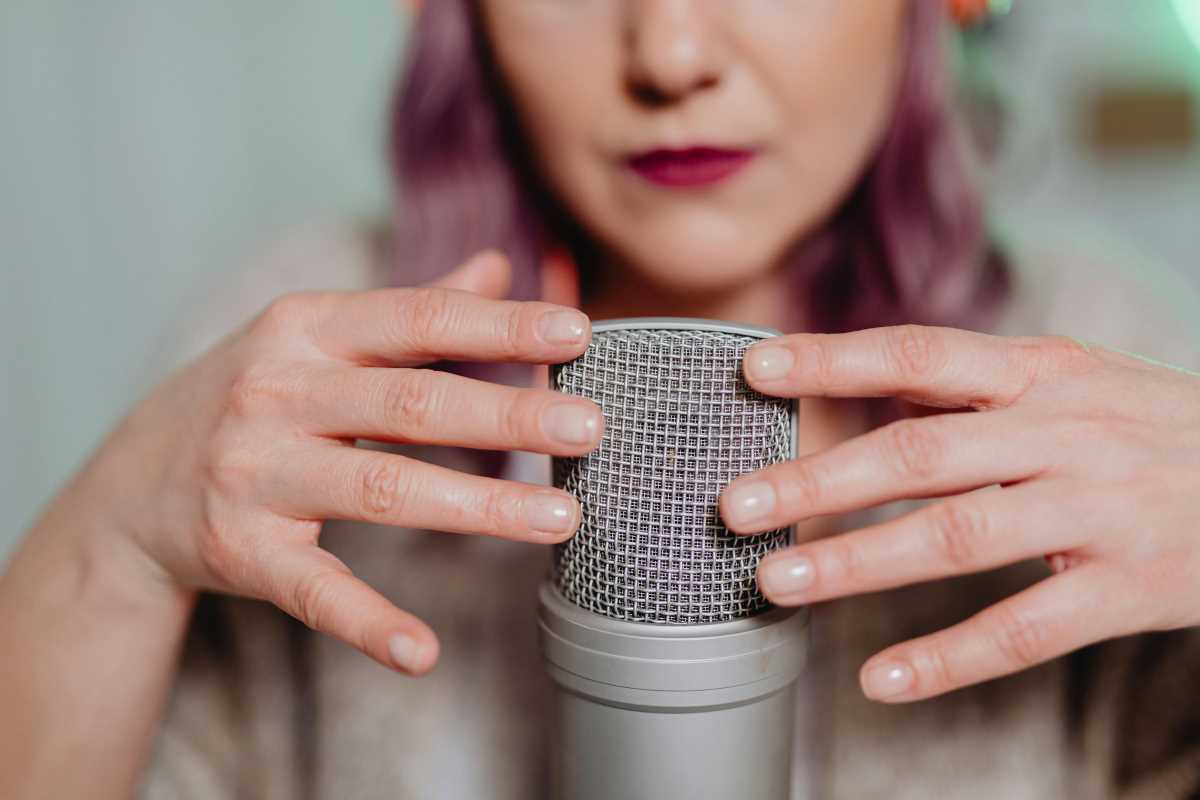Imagine your favorite song stripped down, every note and lyric transformed into a whispery, spine-tingling experience. That’s the magic of ASMR song covers. While the phenomenon of ASMR (Autonomous Sensory Meridian Response) has been around for years, it’s only recently found its way into the music scene. ASMR song covers are gaining popularity, offering listeners a unique auditory experience that blends relaxation, nostalgia, and creativity. But what is it about these gentle, tingly versions of beloved tracks that’s drawing so many fans? Let's break it down.
What Exactly Is ASMR?
If you’re not familiar with ASMR, it refers to the comforting, tingling feeling some people get from certain sounds or visual stimuli. This sensation typically starts at the scalp and moves down the spine, offering a sense of relaxation or calm. Common ASMR triggers include whispers, tapping, soft brushing sounds, and even people crinkling paper.
Content creators on platforms like YouTube have made ASMR a global trend by experimenting with various triggers, providing everything from “unboxing” videos to roleplays. Over time, ASMR has expanded into music, with artists reinterpreting popular songs in ways designed specifically for ASMR fans.
Why ASMR Song Covers Hit Different
Unlike traditional song covers, ASMR versions focus on delivering a sensory experience that can help calm the mind and body. These covers typically feature whispering vocals, soothing tones, and subtle background triggers, such as tapping or ambient sounds. This combination results in a musical experience that’s as much about relaxation as it is about the music itself.
For many listeners, ASMR covers are a great way to unwind after a stressful day. Fans report using them to fall asleep, relax during study sessions, or simply experience their favorite songs in a new light. The softness and intimacy of ASMR music resonate with people who want a break from the high-energy world of mainstream media.
Verified ASMR Song Cover Stars
One standout in this growing niche is Alaina Castillo, a singer who has gained massive recognition for her ASMR song covers. Her whispery renditions of “Earned It” by The Weeknd and “Hey There Delilah” by Plain White T’s showcase her ability to transform widely-known tracks into intimate, tingly experiences. Alaina’s version of Billie Eilish’s “You Should See Me in a Crown” also stands out, breathing fresh, calming life into the edgy original.
Unlike typical loud, high-production covers, Alaina’s ASMR approach takes minimalism to another level. She uses soft-spoken or whispered vocals, a softened instrumental background, and careful pacing to create a relaxing yet emotionally connected piece. Beyond just pleasing music enthusiasts, her covers double as therapeutic content for fans looking to feel more at ease.
Her videos, which feature these unique performances, have racked up millions of views and drawn attention to the broader potential of ASMR in music. Through these covers, Castillo has carved a space for herself and shown how songs can evolve into comforting pieces of art.
The Appeal of ASMR Song Covers
What makes ASMR covers so appealing? For one, they offer listeners a fresh perspective on songs they already love. Hearing a favorite track slowed down, softened, and layered with gentle sensory triggers can make it feel new again. It’s like rediscovering the emotional core of the music.
The rise of ASMR song covers ties into a broader cultural interest in self-care and mindfulness. Many fans use these covers to relax, meditate, or improve focus. Instead of blasting upbeat music, ASMR song covers provide a quiet space for reflection and calm.
There’s also novelty in their production style. Traditional covers often aim to showcase big vocals or complex instrumentals, but ASMR versions focus on delicacy and sensation. These renditions expand what it means to interpret a song, appealing not just to ASMR fans but to anyone curious about new ways to experience music.
How ASMR Covers Differ from Traditional Covers
Whispered Vocals
The most defining feature of an ASMR cover is the use of whispers or soft-spoken tones instead of standard singing. This immediately changes the way you experience the lyrics and melodies.
Focus on Relaxation
Where traditional covers aim to showcase technical skill or creative reimagination, ASMR covers prioritize relaxation and a sense of calm. They are often designed with headphones in mind to make it as immersive as possible, utilizing binaural audio techniques for added depth.
Integrated ASMR Triggers
Many ASMR song covers include additional sounds like gentle tapping, paper rustling, or even rain in the background. These sounds enhance the overall atmosphere and provide a multisensory experience.
The Future of ASMR in Music
With more artists like Alaina Castillo exploring the world of ASMR covers, it’s clear this form of musical expression is here to stay. Its crossover appeal between music enthusiasts and ASMR fans means it has the potential to grow even further. Platforms like TikTok and YouTube, often hubs for musical innovation, ensure that more creators will experiment with this soothing style.
It wouldn’t be surprising if major artists began adopting ASMR elements in their own work, much like Billie Eilish’s subtle use of ASMR-like vocals in some of her songs. ASMR song covers act as a bridge between casual listeners and audiophiles, showing that music doesn’t always need to be loud or energetic to make an impact.
 (Image via
(Image via

.jpeg)



